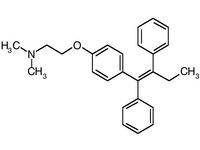Breast cancer incidence increases with age. The use of systemic adjuvant chemotherapy to treat early-stage breast cancer has been shown to improve overall and relapse-free survival in women 50 to 69 years of age, but it is not known whether older women receive the same benefit. Because of increased risk of toxic effects, adjuvant chemotherapy may be underused in older patients. Muss and colleagues, for the Cancer and Leukemia Group B (CALGB), reported on the retrospective review of four trials comparing less aggressive with more aggressive chemotherapy to determine the effects of dose-intensive regimens on older patients.
The four CALGB trials (7581, 8082, 8541, and 9344) compared various dosage regimens in patients with node-positive breast cancer. In the 7581 trial, cyclophosphamide (Cytoxan), methotrexate (Trexall), and fluorouracil (Efudex) plus vincristine (Oncovin) and prednisone improved disease-free survival but not overall survival compared with cyclophosphamide, methotrexate, and fluorouracil alone or cyclophosphamide, methotrexate, and f luorouracil plus methanol extraction residue of bacillus Calmette-Guerin.
In trial 8082, two cyclophosphamide, methotrexate, and fluorouracil regimens were found to be equivalent, but when a follow-up regimen based on doxorubicin (Adriamycin) was added to one arm, it was associated with improved disease-free and overall survival.
In the 8541 trial, three dosage and duration ranges of cyclophosphamide, doxorubicin, and fluorouracil found that moderate- and high-dosage groups had longer disease-free and overall survival. A subset of patients with human epidermal growth factor 2 tumors in the high-dosage groups had significantly better disease-free and overall survival.
The 9344 trial found no differences among groups randomized to three doses of doxorubicin combined with cyclophosphamide, but patients subsequently randomized to receive additional paclitaxel (Taxol) had improved five-year disease-free and overall survival.
These four trials represent a span of 24 years and 6,487 patients. Tumor sizes did not differ significantly among age groups, but the number of positive nodes increased with age. Overall treatment-related mortality was 0.5 percent, with chemotherapy-related mortality increasing linearly with age. Age was unrelated to disease-free or overall survival. Predictors of shortened survival included higher number of positive nodes, larger tumor size, no tamoxifen (Nolvadex) use, and estrogen receptor-negative tumors. More chemotherapy improved overall survival compared with less chemotherapy, regardless of age.
The authors conclude that older patients who receive more chemotherapy do as well as younger patients, though their risk of recurrence is higher because of the greater number of positive lymph nodes in this group. Only 8 percent of the women enrolled in the CALGB trials were older than 65 years, which may be because of an age bias on the part of physicians when offering participation in clinical trials. The authors caution that participation in new trials should be limited to women in otherwise good health.
CAROLINE WELLBERY, M.D. Muss HB, et al. Adjuvant chemotherapy in older and younger women with lymph-node positive breast cancer. JAMA March 2, 2005;293:1073-81.
COPYRIGHT 2005 American Academy of Family Physicians
COPYRIGHT 2006 Gale Group



